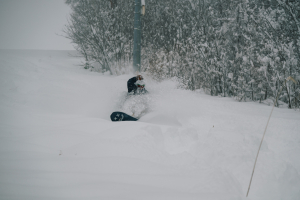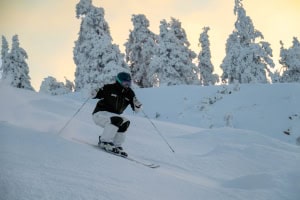The Hokkaido Story: Ainu Culture and The Powdery Gift of The Mountains
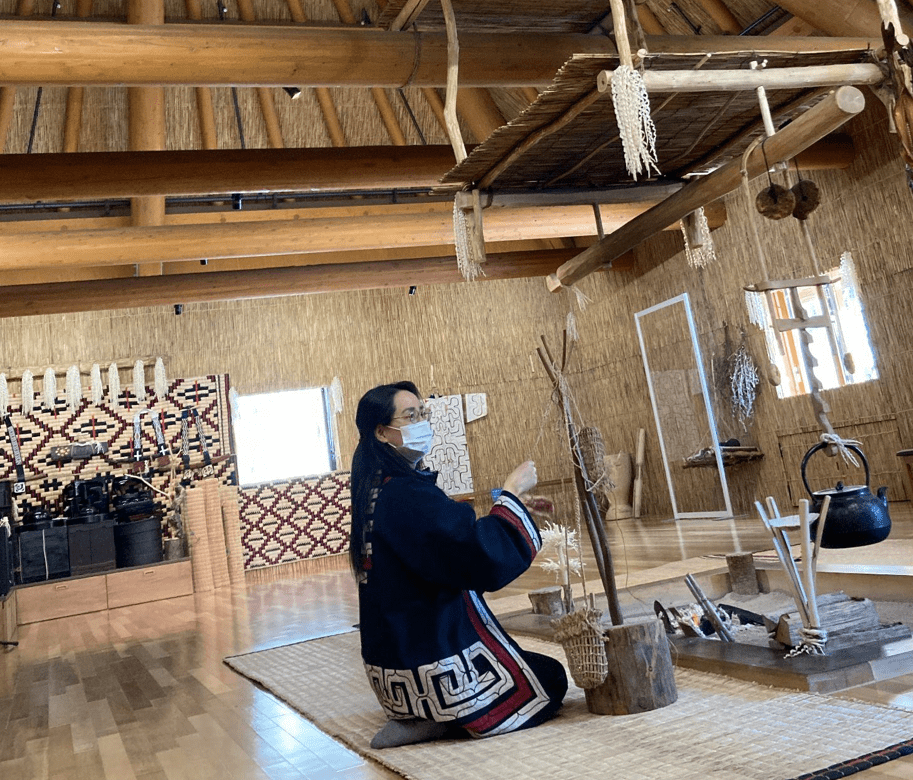
Sponsored Content
Mountainwatch | Nadine Robb
An undisputed powder ski capital of the world, Japan’s northerly prefecture of Hokkaido holds far deeper stories, secrets and significance than the region’s relatively recent ski culture may reveal at a glance. An ancient land inhabited by the indigenous Ainu people, the interactions between man and nature have long since been revered and respected. Touching upon this connection and thus creating context leads the way to a fuller, deeper experience of Japan’s most famed snow destination.
As a people from the Paleolithic period, a connection to the land and environment has always been a grounding force. A little over 30 minutes from New Chitose International Airport is Upopoy National Ainu Museum and Park. An expansive facility perched on the snowy shores of Lake Poroto, the natural spaces combined with modern infrastructure deliver a detailed depiction of Ainu culture, offering interactive opportunities to create, cook, and explore. The re-created Kotan (Traditional Ainu Village) transports you back through the centuries and allows guests to try on traditional clothing and partake in ancient ceremonies.
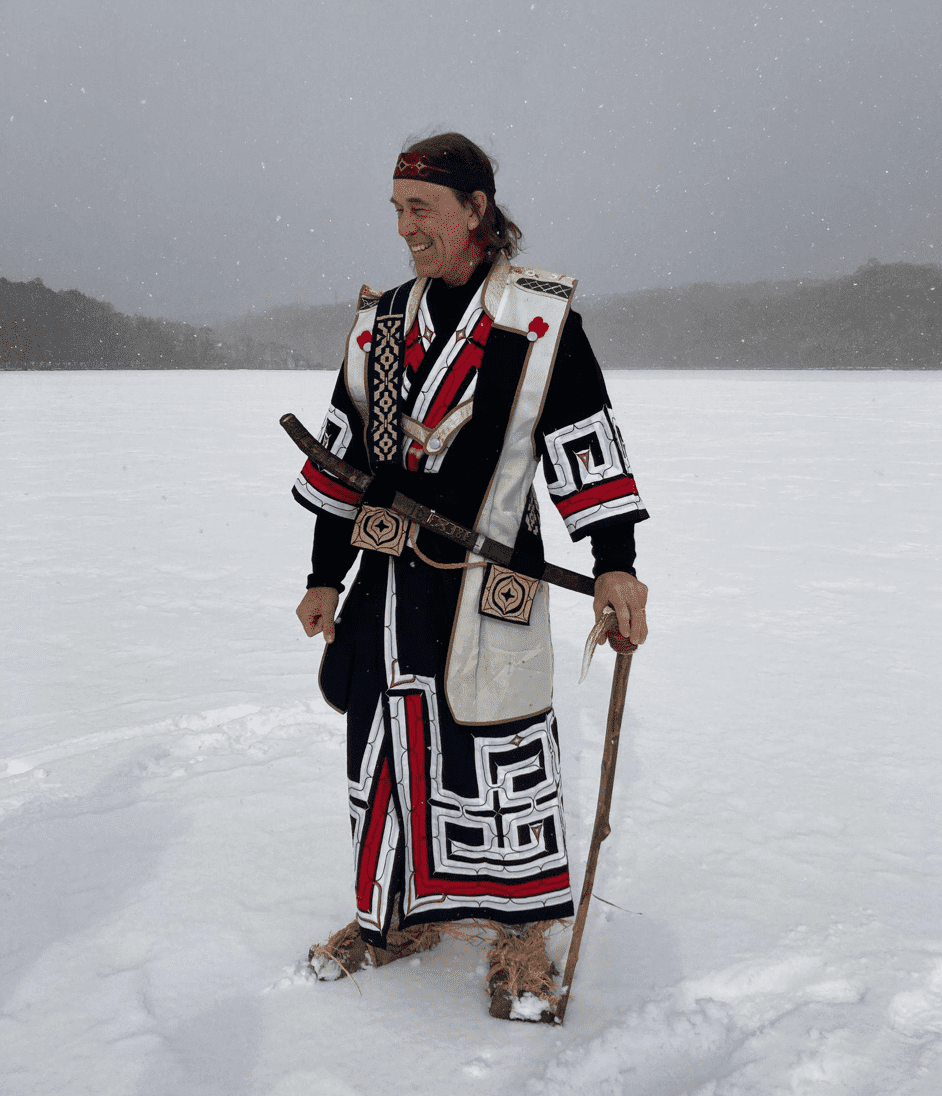
Forming the backbone of the Ainu belief system are Kamuy – spiritual deities that reside in all natural things – including those that are beneficial to humans and necessary for their survival. These include but are not limited to flora, fauna, fire, water and life forces, forging an unbreakable symbiosis between man and nature.
Upopoy is in the town of Shiraoi- another focal point for Ainu Culture in this portion of Hokkaido. Allowing visitors to engage with passed down skills and practices, the significance of the salmon and its role in sustaining the Ainu people is a theme that runs strong. Caught in the autumn as they pursued their upstream spawning ground, the salmon would be hung outside in the cold, dry air, maturing for months at a time and further condensing the flavours within. When they were ready to eat, small slivers would be shaved off using primitive tools – and a sprinkle of sea salt may have been added to further enrich the taste. When food was scarce and the winters long and hard, this was a necessary source of protein and nutrition.
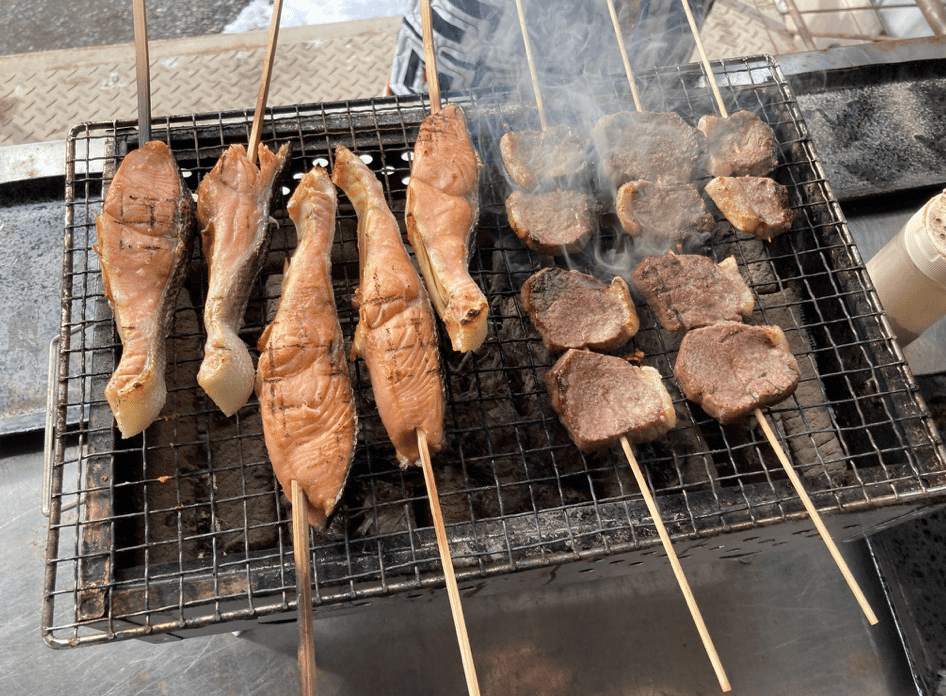
Gratefully utilising what the Kamuy provided, the salmon skin was used to make cep-keri – ankle high boots lined with straw and secured with string. Guests at Shiraoi can sample air dried salmon, make cep-keri and put them to the test with a walk around frozen lake Poroto during the winter months. Walking in the footsteps of Hokkaido’s ancestor’s is a surreal way to spark a connection with the pioneers who went so long before, and better understand the intrinsic link between humans and their environment.
As the lifeblood of existence on earth, water – and therefore snow – forms the centrepiece in Ainu Culture. And so, we look to the mountains, where rivers spring forth, swelling as they spill down to the communities at their feet, and the water cycle persistently precipitates on their peaks. As creatures that innately seek fun and adventure, some of the world’s best-known ski resorts have since been developed in this part of Hokkaido, further famed by the unfathomable volume of power snow that they typically receive each winter.
Less than an hour from the centre of Sapporo City – the prefectural capital – is Sapporo Kokusai Ski Resort. Its proximity to the city proper makes it an easy day trip, while its low-key status has allowed it to somewhat elude the international spotlight – leading to less line ups, tourists and virgin line competitors. For powder skiers there are great pockets of lift accessed off piste and side-country, which often succumb to daily resets as the unrelenting snow storms swirl overheard. Most of the traffic at Sapporo Kokusai are local day trippers and/or Japanese school groups – neither of which tend to gravitate towards to more exciting off piste areas, trees or deep powder zones. On resort the slopes are gradual, wide and open, though there are two steeper (often moguled) runs close to the top. For beginners and novice skiers, the lack of crowding and space per skier is ideal – making it an excellent all-round resort. The base area infrastructure is complete, and you’ll find what you need there including rentals, refreshments and a space to rest up should you need.
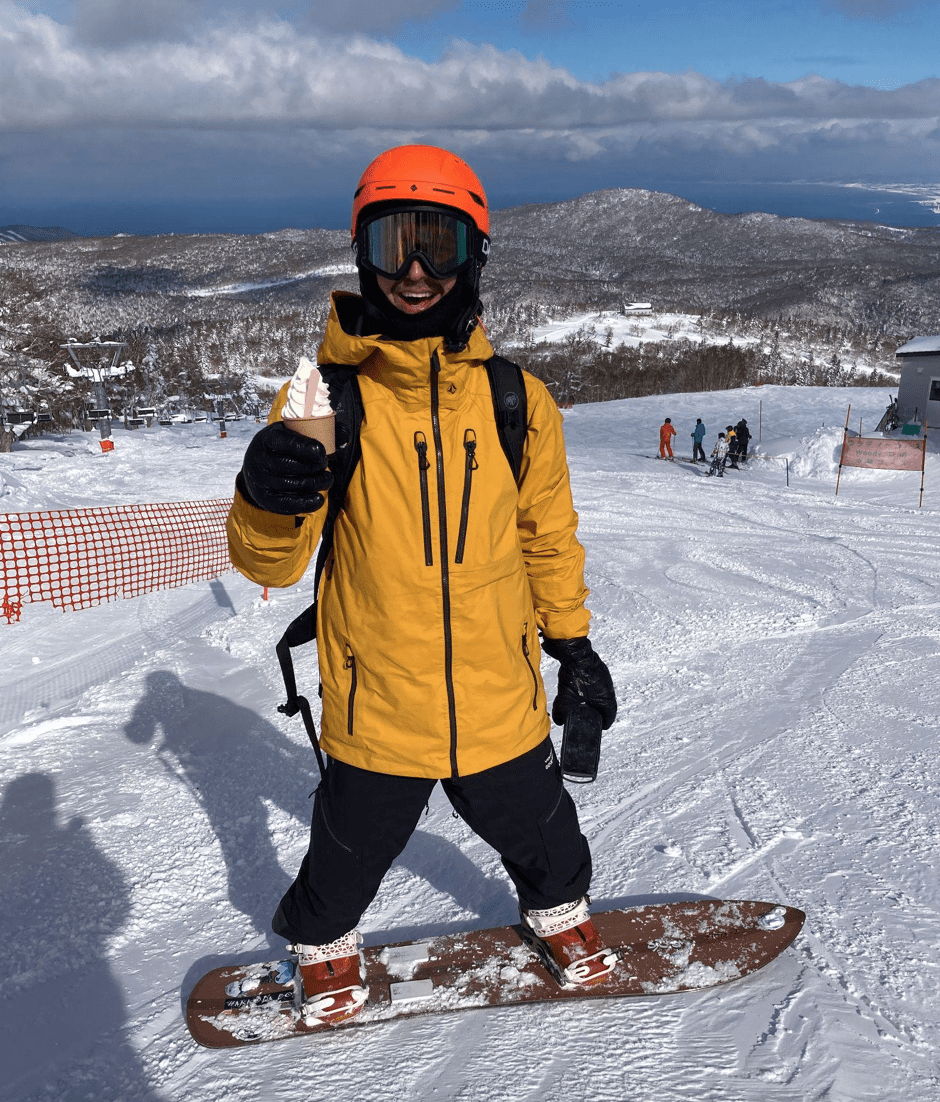
Head an hour south by car the view restricting foothills fall away, revealing the iconic Mt Yotei stretched out on the horizon – a mock Mt Fuji – signaling your approach to the world-renowned Niseko. As one of the four resorts that comprise Niseko United, Annupuri’s (arguably) greatest strength is the ease of backcountry access and long, playful lines from its backcountry gates. Simplifying things, the resort’s patrol team assess the avalanche risk daily, and based upon their findings the gates are either “open” or “closed”. Online bulletins are updated daily, containing deep and detailed information as to the day’s conditions and snowpack – allowing guests to make informed decisions before heading out.
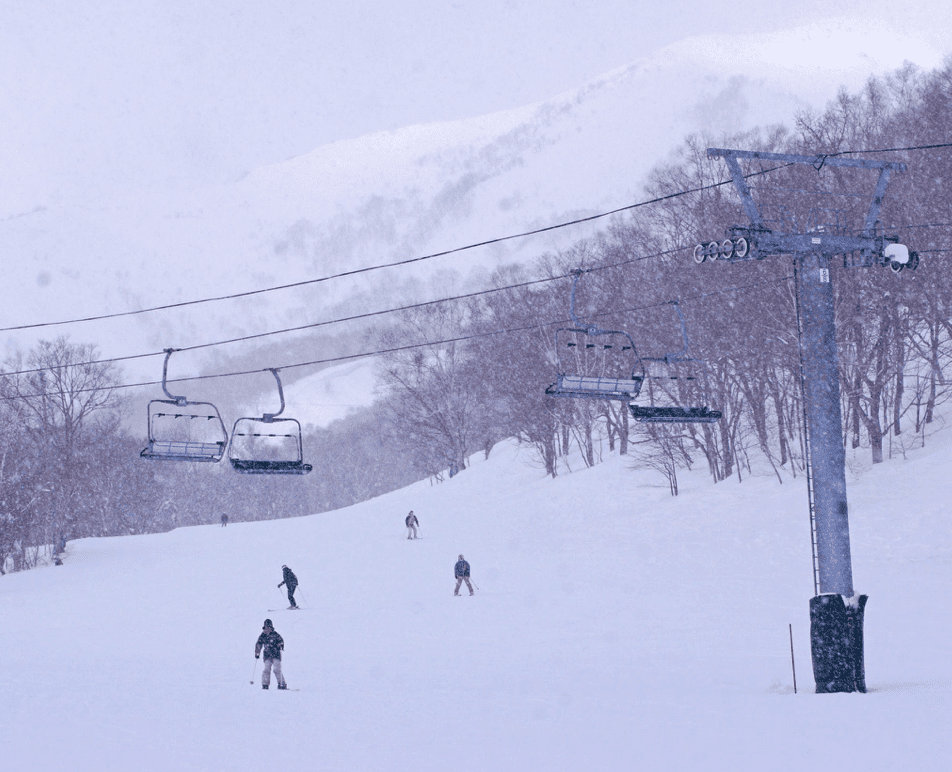
After passing through a lift-accessed backcountry gate, you enter a powder lovers paradise as a plethora of possible lines open up before you. As a service minded resort, topographical maps of the entire mountain are available for free at the base areas, and there are several professional and well reputed guiding operations in Niseko should you opt for one.
The skiing itself is good; creases and folds in the terrain create the opportunity for play, while the length of the lines allow for long, continuous riding. The Annuprui advantage is how easily the base area can be regained and one can be brought back to the top for another lap. It also offers the opportunity to unclip the hardware and soak in one of the several natural hot springs that scatter the mountain’s lower flanks – often housed in rustic, quaint establishments that have been operating as bathhouses for decades. While other areas of Niseko may be newer and shinier, the Annupuri pocket perhaps provides a more pure experience of the local families and businesses that pioneered the region.
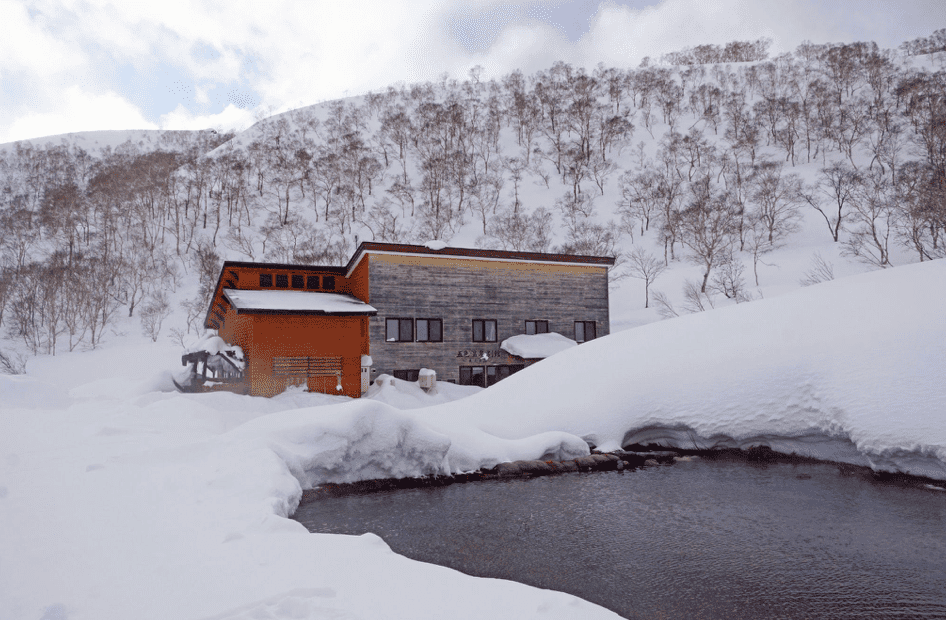
Upping the terrain ante once more is heli skiing on Mt Shiribetsu. Holding some of the steepest and most technically interesting terrain in all of Hokkaido, it should not be skipped over by any backcountry enthusiast. Ensuring that you are in safe hands is Hokkaido Backcountry Club – the prefectures leading guiding operator and largest employer of internationally certified mountain guides from the US and Canada (to name but a few nationalities of their guiding team). Though the snow pack in Japan is notoriously forgiving and fast healing – as a maritime snowpack but also owing to the fluctuating temperature gradient within it – the steep, deep and at times “terrain-trappy” aspects of Shiribetsu can and do slide, causing fatalities. As one of their many stomping grounds, the guides of Hokkaido Backcountry Club have intimate knowledge of current snow conditions and the variety of routes that can be safely challenged on any given day.
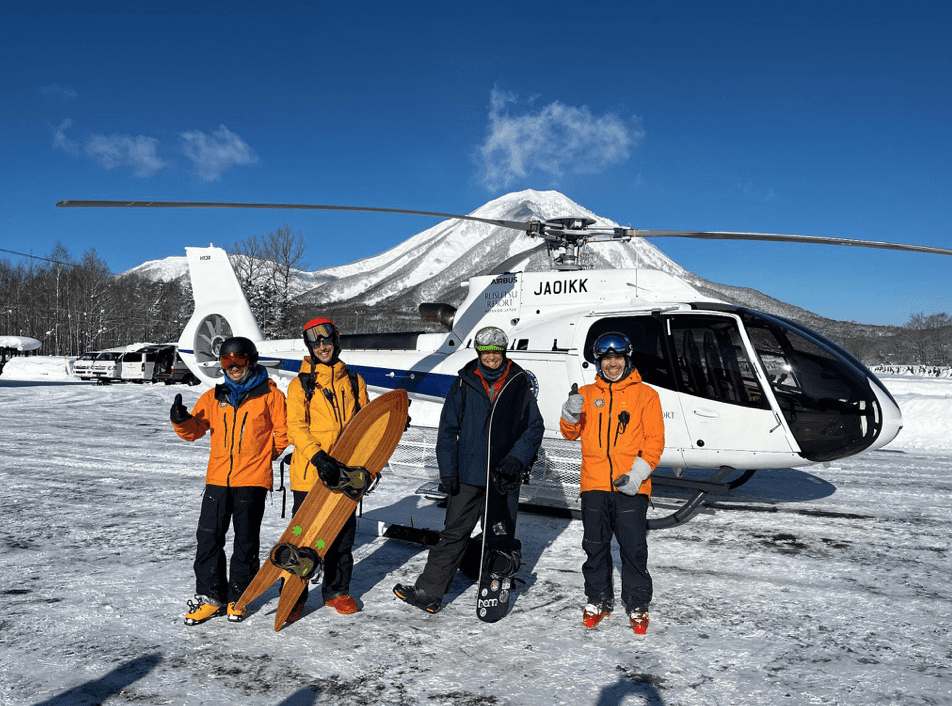
The helicopter fly in is a thrill in itself, and from Shiribetsu’s summit the views are second to none, surrounded by seas, summits and large caldera lakes. Somewhat sheltered by Mt Yotei, the snow holds well, and given the less conventional access it is far less trafficked than other backcountry routes in the region, consistently yielding the famously light and dry powder snow that Japan is so celebrated for.
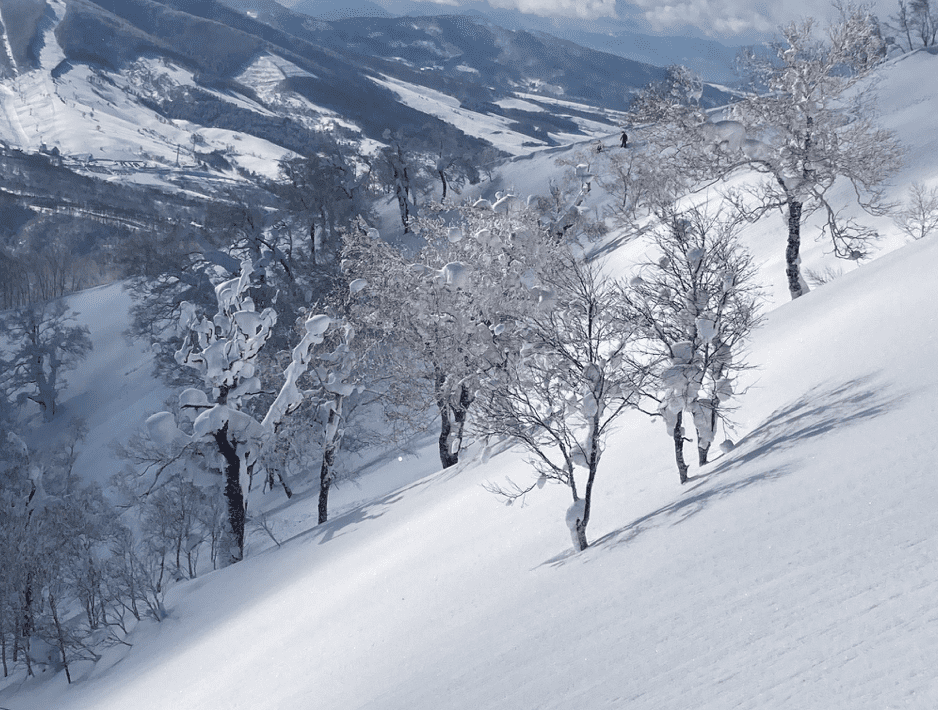
After satiating a call to the mountains, guests can return to sea level and engage in the raw, primal act of catching your own meal. Just north of Sapporo city is the Barato River, where ice fishing is one of the main draws. A village of tents decorate the frozen surface, each providing warmth and shelter in what can be an extreme and bitter climate. A hole is drilled down through the ice in the center of the tent, just big enough for a wakasagi (Japanese smelt fish) to be pulled through. Once caught, the Wakasagiare fried outside of the tent, turning them into bite-sized tempura!
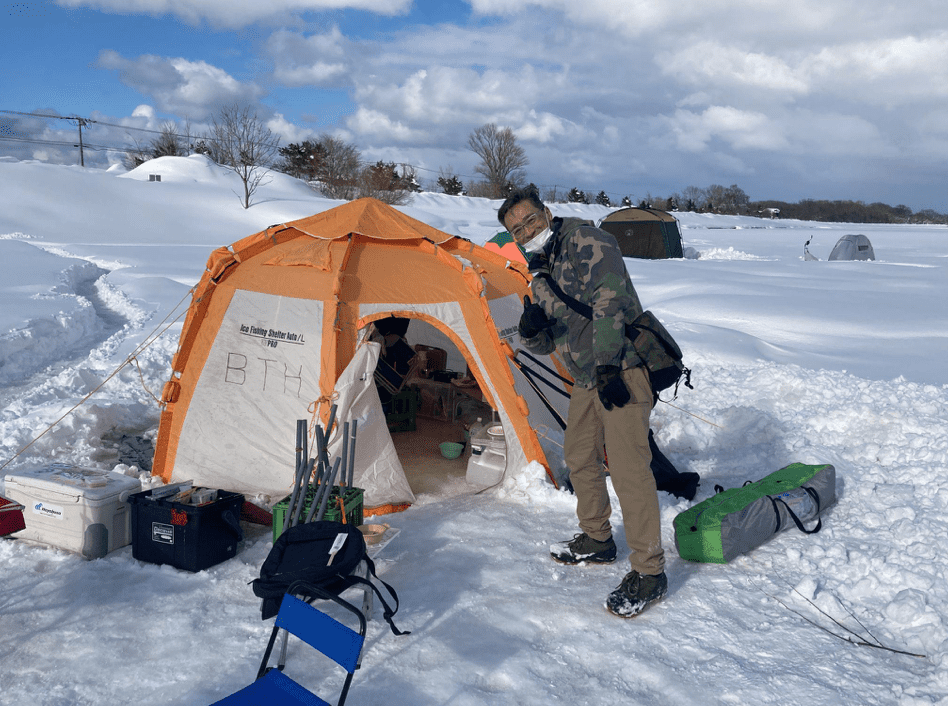
Though this is a fun activity for visitors and locals alike, it is once again an opportunity to reflect upon the resilience of the Ainu people and their reliant yet respectful interactions with the world around them. In order to obtain the truest sense of this region of Japan we need to reach into its history, learn its story, and try, if we can – to see Hokkaido through the eyes of the Ainu.
Check out the Hokkaido Tourism Organisation or to HOKKAIDO LOVE!for more information.
